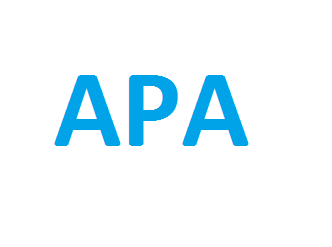
The Academic Perspective Procedia publishes Academic Platform symposiums papers as three volumes in a year. DOI number is given to all of our papers.
Publisher : Academic Perspective
Journal DOI : 10.33793/acperpro
Journal eISSN : 2667-5862
Evaluation of Gene Expression Method for Rainfall-Runoff Relationship: Case study of the E21A057 Station
İbrahim Halil İfşaat;Veysel Gümüş;Oğuz Şimşek
1331
555
Abstract
A reliable model for the prediction of rainfall-runoff process is important for water resource planning and management. The accurate estimation of monthly rainfall and runoff also can be considered a key element for predicting drought in the near future. Rainfall is the most important factor for flow. Therefore, knowing the amount of rainfall in a basin can help to improve the accuracy of forecasting models for river flow Precipitation and flow have a complex and nonlinear relationship. Additionally, the effect of precipitation on the flow depends on basin characteristics such as topography, shape, slope, type of soil, soil moisture, temperature and evaporation. These parameters are generally considered in conceptual models. However, since the basin characteristics are difficult to determine, in recent years the relationship between precipitation and flow can be made with limited data by artificial intelligence methods. In this study, monthly mean flow values of E21A057 Stream Gauging Station (SGS) are estimated by Genexpression Programming (GEP) and Multiple Linear Regression (MLR) methods by using monthly total precipitation values of 17204 meteorological observation station. Models which are prepared using different input parameters, the GEP method is found to be more successful in almost all cases compared to the MLR method. The most successful model among all models is determined as DM04 using four input parameters in GEP method. These parameters are Precipitation (P), 1 month lagged flow rate (Q-1), 1 month lagged precipitation (P-1) and 2 month lagged precipitation (P-2).
Keywords:
Euphrates Basin, Gene expression programming, rainfall–runoff relationship, Multiple Linear regression
References
[1] Wang W-C, Chau K-W, Cheng C-T, Qiu L. A comparison of performance of severalartificial intelligence methods for forecasting monthly discharge time series. Journal ofHydrology 2009;374(3-4):294-306.
[2] Wu CL, Chau KW, Li YS. Predicting monthly streamflow using data-driven modelscoupled with data-preprocessing techniques. Water Resources Research 2009;45(8).
[3] Gümüş V, Soydan NG, Şimşek O, Aköz MS, Kırkgöz MS. Yağıs-Akış İlişkisininBelirlenmesinde Farklı Yapay Sinir Ağı Yöntemlerinin Karşılaştırılması. ÇukurovaÜniversitesi Mühendislik-Mimarlık Fakültesi Dergisi 2013;28(1):37-50.
[4] El-Shafie A, Mukhlisin M, Najah AA, Taha MR. Performance of artificial neural networkand regression techniques for rainfall-runoff prediction. International Journal of PhysicalSciences 2011;6(8):1997-2003.
[5] Adamowski J, Chan HF, Prasher SO, Sharda VN. Comparison of multivariate adaptiveregression splines with coupled wavelet transform artificial neural networks for runoffforecasting in Himalayan micro-watersheds with limited data. Journal of Hydroinformatics2012;14(3):731-44.
[6] Aksoy H, Dahamsheh A. Artificial neural network models for forecasting monthlyprecipitation in Jordan. Stochastic Environmental Research and Risk Assessment2008;23(7):917-31.
[7] Machado F, Mine M, Kaviski E, Fill H. Monthly rainfall–runoff modelling using artificialneural networks. Hydrological Sciences Journal 2011;56(3):349-61.
[8] Dahamsheh A, Aksoy H. Artificial neural network models for forecasting intermittentmonthly precipitation in arid regions. Meteorological Applications 2009;16(3):325-37.
[9] Danandeh Mehr A. An improved gene expression programming model for streamflowforecasting in intermittent streams. Journal of Hydrology 2018;563:669-78.
[10] Hashmi MZ, Shamseldin AY, Melville BW. Statistical downscaling of watershedprecipitation using Gene Expression Programming (GEP). Environmental Modelling &Software 2011;26(12):1639-46.
[11] Ferreira C. Gene expression programming: mathematical modeling by an artificialintelligence. Springer; 2006.
Cite
-
 @article{acperproISITES2019ID94, author={İfşaat, İbrahim Halil and Gümüş, Veysel and Şimşek, Oğuz}, title={Evaluation of Gene Expression Method for Rainfall-Runoff Relationship: Case study of the E21A057 Station}, journal={Academic Perspective Procedia}, eissn={2667-5862}, volume={2}, year=2019, pages={851-858}}
@article{acperproISITES2019ID94, author={İfşaat, İbrahim Halil and Gümüş, Veysel and Şimşek, Oğuz}, title={Evaluation of Gene Expression Method for Rainfall-Runoff Relationship: Case study of the E21A057 Station}, journal={Academic Perspective Procedia}, eissn={2667-5862}, volume={2}, year=2019, pages={851-858}} -
 %0 Academic Perspective Procedia (ACPERPRO) Evaluation of Gene Expression Method for Rainfall-Runoff Relationship: Case study of the E21A057 Station% A İbrahim Halil İfşaat , Veysel Gümüş , Oğuz Şimşek% T Evaluation of Gene Expression Method for Rainfall-Runoff Relationship: Case study of the E21A057 Station% D 11/22/2019% J Academic Perspective Procedia (ACPERPRO)% P 851-858% V 2% N 3% R doi: 10.33793/acperpro.02.03.94% U 10.33793/acperpro.02.03.94
%0 Academic Perspective Procedia (ACPERPRO) Evaluation of Gene Expression Method for Rainfall-Runoff Relationship: Case study of the E21A057 Station% A İbrahim Halil İfşaat , Veysel Gümüş , Oğuz Şimşek% T Evaluation of Gene Expression Method for Rainfall-Runoff Relationship: Case study of the E21A057 Station% D 11/22/2019% J Academic Perspective Procedia (ACPERPRO)% P 851-858% V 2% N 3% R doi: 10.33793/acperpro.02.03.94% U 10.33793/acperpro.02.03.94
© Academic Perspective 2018. All rights reserved.



